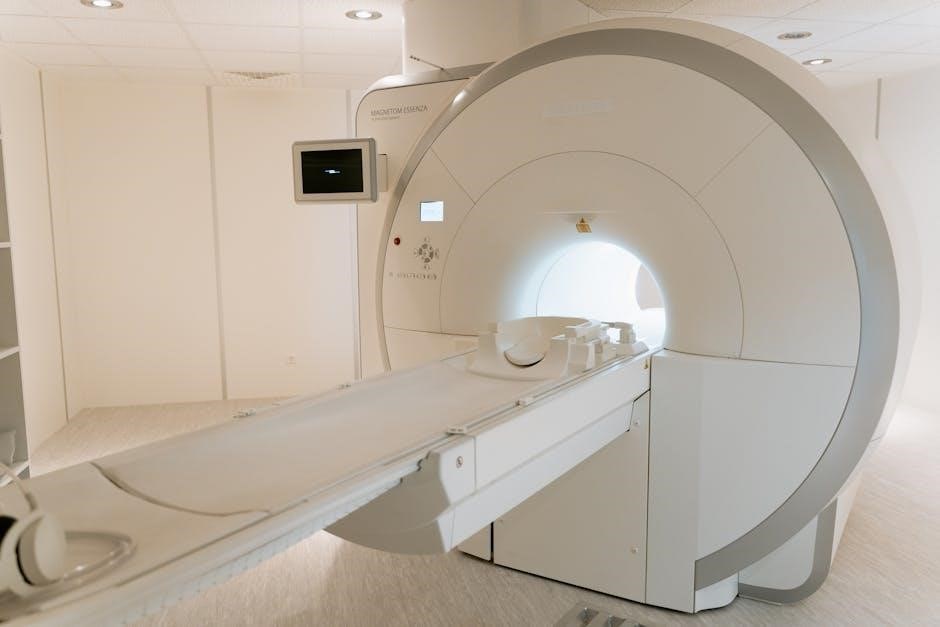
vb mapp barriers assessment pdf
VB-MAPP Barriers Assessment PDF: A Comprehensive Plan
The VB-MAPP’s Barriers Assessment, within its PDF format, meticulously evaluates 22 common learning obstacles.
It’s crucial for pinpointing challenges hindering a child’s progress,
especially when considering transitions to less restrictive educational settings, as highlighted by Hopebridge.
The Verbal Behavior Milestones Assessment and Placement Program (VB-MAPP) is a comprehensive, developmentally-based assessment tool widely utilized by Board Certified Behavior Analysts (BCBAs) and educators. It’s designed to assess a child’s language and learning skills, providing a roadmap for individualized ABA therapy and educational planning. Crucially, the VB-MAPP isn’t solely focused on what a child can do; it also identifies significant barriers hindering their progress.
The Barriers Assessment, a key component of the VB-MAPP, specifically addresses 22 common obstacles impacting language acquisition and learning for children with Autism Spectrum Disorder (ASD) and other developmental delays. Understanding these barriers – ranging from behavioral challenges to sensory sensitivities – is paramount. This assessment, often accessed in PDF format, informs targeted interventions and supports successful transitions, like moving from specialized classrooms to general education environments, as noted by resources from Hopebridge Autism Therapy Center and PMC articles.
What is the VB-MAPP?
The VB-MAPP, or Verbal Behavior Milestones Assessment and Placement Program, is a standardized assessment tool designed to evaluate a child’s language and cognitive abilities. Developed with Applied Behavior Analysis (ABA) principles, it moves beyond traditional assessments by focusing on verbal behavior – language as a function, not just a form. All About Behavior highlights its comprehensive nature.
The assessment is structured around milestones, charting a child’s progress across various skill areas. A critical element is the Barriers Assessment, which identifies 22 potential obstacles to learning and language development. This component, often delivered as a PDF, is vital for creating effective intervention plans. It considers factors like behavioral issues and instructional control, as detailed in PMC research. The VB-MAPP ultimately guides placement decisions, helping determine the least restrictive environment for optimal growth.
The Importance of the Barriers Assessment
The VB-MAPP’s Barriers Assessment is paramount because it directly informs effective ABA therapy planning. Identifying these obstacles – encompassing behavioral, sensory, cognitive, and motor challenges – allows Board Certified Behavior Analysts (BCBAs) to tailor interventions precisely to a child’s needs. Hopebridge emphasizes its role in preparing children for less restrictive educational environments.
Without this assessment, interventions might address symptoms rather than root causes. The PDF format ensures standardized administration and documentation. Understanding these barriers, such as instructional control or problem behaviors, is crucial for maximizing a child’s learning potential. It’s not simply about what a child can’t do, but why they struggle, as highlighted by research on the VB-MAPP. This targeted approach accelerates progress and improves outcomes.

Understanding the VB-MAPP Barriers Assessment
The VB-MAPP’s Barriers Assessment, detailed in its PDF, systematically examines potential impediments to learning and language acquisition for children with ASD and delays.

Purpose of the Barriers Assessment
The primary purpose of the VB-MAPP Barriers Assessment, readily available in PDF format, is to identify specific obstacles that may be hindering a child’s progress in verbal behavior and overall learning. This assessment doesn’t simply diagnose deficits; it proactively seeks to understand why a child might be struggling.
As detailed by resources like the PMC article and Hopebridge Autism Therapy Center, the assessment considers a broad spectrum of potential barriers, ranging from behavioral challenges and sensory sensitivities to cognitive and motor skill limitations.
Understanding these barriers is fundamental for creating effective and individualized ABA therapy plans. It allows Board Certified Behavior Analysts (BCBAs) to tailor interventions to address the root causes of learning difficulties, rather than just focusing on surface-level symptoms. Ultimately, the assessment aims to facilitate a child’s successful integration into less restrictive environments, like general education classrooms, by pinpointing areas needing support.
The 22 Common Barriers Assessed
The VB-MAPP Barriers Assessment, documented in its PDF format, comprehensively evaluates 22 distinct language and learning barriers frequently encountered in children with autism spectrum disorder and developmental delays. All About Behavior highlights this extensive evaluation.
These barriers encompass a wide range of challenges, including difficulties with instructional control – a child’s ability to follow directions – and problematic behavior that interferes with learning. The assessment also investigates potential issues related to motivation, vocal imitation, and responding to questions.
Furthermore, it assesses barriers concerning matching, requesting, labeling, and understanding simple instructions. The assessment doesn’t stop there; it also considers barriers related to the child’s ability to generalize skills and maintain learned behaviors over time. Identifying these specific barriers is crucial for developing targeted ABA therapy interventions.
How the Barriers Assessment Differs from Other Assessments
Unlike many standardized assessments, the VB-MAPP Barriers Assessment, available in PDF format, uniquely focuses on pinpointing specific obstacles impacting a child’s ability to acquire language and skills. As detailed in the PMC article, it considers both learning and language acquisition barriers, such as behavioral problems and instructional control.
Traditional assessments often provide a general overview of a child’s developmental level, but the VB-MAPP delves deeper, identifying precisely why a child might be struggling. This nuanced approach allows for highly individualized ABA therapy planning.
It’s not merely a measure of what a child can’t do, but rather an investigation into the underlying reasons for those difficulties. This distinction is vital for creating effective interventions that address the root causes of learning challenges, rather than simply targeting symptoms.

Detailed Breakdown of Barrier Categories
The VB-MAPP Barriers Assessment PDF categorizes obstacles into behavioral, sensory, cognitive, and motor areas.
These classifications help professionals understand the specific challenges impacting a child’s learning.
Behavioral Barriers
Behavioral barriers, as identified within the VB-MAPP Barriers Assessment PDF, significantly impact a child’s ability to acquire new skills. These encompass challenges like limited instructional control, where the child doesn’t consistently respond to teacher direction. Problem behaviors, as noted in PMC articles, can disrupt learning and impede progress.
Difficulties with motivation are also key; a lack of reinforcement responsiveness hinders engagement. The assessment considers whether a child exhibits escape or avoidance behaviors, actively trying to get out of learning situations. Additionally, the presence of interfering behaviors—actions that prevent participation—is carefully evaluated.
Understanding these behavioral barriers is crucial for ABA therapy planning, allowing BCBAs to develop strategies to increase motivation, reduce problem behaviors, and establish better instructional control, ultimately fostering a more effective learning environment.
Sensory Barriers
Sensory barriers, detailed in the VB-MAPP Barriers Assessment PDF, represent significant obstacles to learning for many children. These involve difficulties processing sensory input, impacting their ability to attend and engage. The assessment evaluates hypersensitivity – over-responsiveness – to stimuli like sounds, lights, or textures, which can cause distress and avoidance.
Hyposensitivity, or under-responsiveness, is also considered; a child might seek excessive sensory input. Sensory seeking behaviors can be disruptive and interfere with learning tasks. The PDF helps determine if sensory sensitivities are impacting the child’s ability to follow instructions or participate in activities.
Addressing these barriers is vital. ABA therapy can incorporate sensory integration strategies to help children regulate their sensory experiences and improve their focus, creating a more conducive learning environment.
Cognitive Barriers
Cognitive barriers, as assessed within the VB-MAPP Barriers Assessment PDF, encompass challenges related to thinking, understanding, and problem-solving. These barriers can significantly impede a child’s progress in acquiring new skills and concepts. The assessment identifies difficulties with matching, sorting, and understanding basic concepts like “same” and “different.”
Difficulties with instructional control – the ability to follow directions and respond to teacher prompts – are also evaluated. A lack of motivation to learn, or a preference for immediate reinforcement over delayed rewards, can present cognitive hurdles. The PDF helps pinpoint if a child struggles with generalization, applying learned skills to new situations.
ABA therapy addresses these barriers through discrete trial training and shaping, breaking down complex tasks into smaller, manageable steps.
Motor Barriers
Motor barriers identified in the VB-MAPP Barriers Assessment PDF relate to physical abilities impacting learning and skill acquisition. These aren’t necessarily neurological; they encompass difficulties with gross and fine motor skills that hinder a child’s ability to participate in learning activities. Assessments cover challenges with imitating motor actions, a foundational skill for many ABA programs.
Difficulties with handwriting, using manipulatives, or even simple tasks like pointing can be flagged. The PDF helps determine if a child’s motor skills are impacting their ability to respond to prompts or demonstrate learned concepts; These barriers can affect a child’s independence and participation in classroom settings.
Therapy addresses these through occupational therapy integration, focusing on strengthening muscles and improving coordination.

Utilizing the VB-MAPP Barriers Assessment Results
Results from the VB-MAPP PDF pinpoint specific learning obstacles, directly informing ABA therapy plans. BCBAs integrate these findings with other assessments for a holistic view.
Identifying Specific Learning Barriers
The VB-MAPP Barriers Assessment, detailed within its PDF documentation, goes beyond simply identifying deficits; it meticulously pinpoints specific obstacles hindering a child’s progress. This isn’t a generalized overview, but a granular examination of 22 common barriers impacting language and learning.
These barriers, as noted by resources like All About Behavior, encompass a wide range of challenges, from behavioral issues and lack of instructional control to sensory sensitivities and cognitive limitations. The assessment helps determine why a child is struggling, not just that they are.
For example, a child might demonstrate difficulty with receptive language not due to a lack of capacity, but because of a sensory barrier impacting their ability to attend to auditory stimuli. Understanding this nuance is critical for effective intervention planning, allowing BCBAs to tailor strategies to address the root cause of the learning challenge. The PDF format ensures consistent and reliable data collection for accurate identification.
Impact on ABA Therapy Planning
The VB-MAPP Barriers Assessment PDF profoundly impacts ABA therapy planning by shifting the focus from simply teaching skills to removing obstacles to learning. Hopebridge emphasizes how this assessment allows BCBAs to “meet the child where they currently are.” This means therapy isn’t a one-size-fits-all approach, but a highly individualized plan addressing specific barriers;
Identifying these barriers – whether behavioral, sensory, cognitive, or motor – dictates the initial priorities of therapy. For instance, if a child exhibits significant behavioral barriers, therapy might initially focus on establishing motivation and reducing problematic behaviors before introducing new skills.
The PDF’s detailed data informs the selection of appropriate ABA techniques and strategies. It ensures interventions are targeted and efficient, maximizing the child’s potential for progress. Ultimately, the assessment ensures ABA therapy is responsive to the child’s unique needs, fostering a more effective and positive learning experience.
Integrating Results with Other Assessments
The VB-MAPP Barriers Assessment PDF isn’t meant to stand alone; its power is maximized when integrated with results from other evaluations. A comprehensive understanding of a child’s needs requires a holistic approach, combining data from various sources. This includes cognitive assessments, speech and language evaluations, and occupational therapy reports.
Comparing the VB-MAPP’s barrier identification with findings from other assessments can reveal patterns and confirm areas of concern. Discrepancies between assessments can also highlight the need for further investigation. For example, a cognitive assessment might indicate strong intellectual abilities, while the VB-MAPP reveals significant sensory barriers hindering skill acquisition.
This integrated approach allows BCBAs to develop a more nuanced and effective treatment plan, addressing the whole child and maximizing their potential for growth. It ensures interventions are targeted, comprehensive, and truly individualized.

The VB-MAPP and Educational Placement
The VB-MAPP, via its PDF assessment, informs decisions about educational placement, evaluating readiness for less restrictive environments.
Hopebridge notes it guides transitions to general education with appropriate supports.
Preparing for Less Restrictive Environments
The VB-MAPP Barriers Assessment, delivered as a PDF, is instrumental in preparing children for more inclusive educational settings. It provides a detailed understanding of a child’s current skill level and identifies specific areas where support may be needed to succeed in a less restrictive environment.
As Hopebridge Autism Therapy Center emphasizes, the assessment’s insights help determine if a child is ready to transition from a specialized classroom to a general education setting. This isn’t simply about academic skills; it’s about evaluating the presence and severity of barriers to learning and social interaction.
The PDF format allows for easy sharing and review among the educational team – teachers, BCBAs, and parents – ensuring a collaborative approach to placement decisions. By addressing identified barriers proactively, educators can create a supportive environment that fosters growth and independence for the child.
Supporting Transition to General Education
The VB-MAPP Barriers Assessment, accessible in PDF format, directly supports a child’s successful transition to general education by outlining necessary accommodations and supports. Identifying specific barriers – behavioral, sensory, cognitive, or motor – allows educators to proactively address potential challenges before they impede progress.
This assessment isn’t merely diagnostic; it’s a roadmap for intervention. The PDF details areas where the child may require assistance with instructional control, motivation, or reducing problematic behaviors. These insights inform the development of individualized education programs (IEPs) tailored to the child’s unique needs.
Furthermore, the assessment facilitates communication between therapists and teachers, ensuring consistency in strategies across settings. By understanding the child’s barriers, educators can create a more inclusive and supportive classroom environment, maximizing their potential for academic and social success.
The Role of BCBAs in Interpretation
Board Certified Behavior Analysts (BCBAs) are pivotal in accurately interpreting the VB-MAPP Barriers Assessment PDF data. Their expertise ensures a nuanced understanding beyond simply identifying barriers; they contextualize findings within the child’s overall developmental profile and behavioral patterns.

BCBAs translate assessment results into actionable strategies for ABA therapy and educational planning. They determine the severity of each barrier and prioritize interventions accordingly. This includes designing targeted programs to address skill deficits and reduce problematic behaviors hindering learning.
Crucially, BCBAs collaborate with parents and educators, explaining the assessment’s implications in accessible terms. They advocate for appropriate supports and accommodations, ensuring the child’s needs are met in all environments. Their informed interpretation is essential for maximizing the VB-MAPP’s effectiveness.

Practical Considerations for Implementation
Implementing the VB-MAPP Barriers Assessment PDF requires trained professionals to administer and interpret data effectively. Accessibility of the PDF format is also vital for usability.
Administering the Barriers Assessment
Successfully administering the VB-MAPP Barriers Assessment demands a qualified professional, typically a Board Certified Behavior Analyst (BCBA), possessing thorough training in the assessment’s protocols. The process isn’t simply a checklist; it requires direct observation of the child across various settings and routines.
Careful consideration must be given to ensuring the assessment environment is conducive to accurate data collection – minimizing distractions and maximizing the child’s comfort. The BCBA systematically observes and records the presence or absence of each of the 22 identified barriers.
Data collection often involves utilizing the PDF form directly, marking responses as observed, or employing digital data collection tools linked to the assessment. Consistency in application is paramount, and the BCBA must adhere strictly to the operational definitions provided within the VB-MAPP manual to maintain reliability and validity of the results.
Interpreting Assessment Data
Analyzing the VB-MAPP Barriers Assessment PDF requires a nuanced understanding of each barrier’s implications for learning. Identifying patterns – clusters of barriers – is more informative than focusing on isolated findings. A BCBA doesn’t simply tally ‘present’ or ‘absent’ barriers; they consider the severity and impact on the child’s ability to acquire skills.
The assessment data should be viewed within the context of the child’s overall VB-MAPP results, including their current skill levels. For example, a sensory barrier might be less impactful if the child already demonstrates strong motivation for learning.

Furthermore, the BCBA must integrate this information with data from other assessments and observations to develop a comprehensive understanding of the child’s learning profile, informing individualized ABA therapy planning and educational recommendations.
PDF Format and Accessibility
The VB-MAPP Barriers Assessment is commonly distributed as a PDF document, offering portability and standardized presentation. However, accessibility is a crucial consideration. Ensure the PDF is tagged correctly for screen readers, enabling individuals with visual impairments to access the information.
Interactive features within the PDF, such as fillable forms for data entry, can streamline the assessment process. However, these features must also be accessible. Proper PDF creation software and adherence to accessibility standards (like WCAG) are essential.
Furthermore, consider the file size of the PDF to facilitate easy sharing and downloading. A well-structured, accessible PDF ensures the assessment benefits all users, promoting equitable access to valuable information about a child’s learning barriers.

Resources and Further Information
Explore Hopebridge’s resources, PMC articles, and All About Behavior for in-depth VB-MAPP insights. These platforms offer valuable information regarding the barriers assessment and its application.
Hopebridge Autism Therapy Center Resources
Hopebridge Autism Therapy Center provides a valuable “Parent’s Quick Guide to the VB-MAPP,” offering accessible insights into understanding your child’s developmental preparedness. This resource specifically highlights how the assessment informs decisions regarding placement in less restrictive environments, such as transitioning from specialized classrooms to general education settings with appropriate supports.
The guide emphasizes the BCBA’s role in utilizing the VB-MAPP to pinpoint specific areas needing focus during ABA therapy. This ensures interventions are tailored to the child’s current skill level and actively work towards achieving individualized goals. Hopebridge’s materials aim to empower parents with knowledge about the VB-MAPP process and its benefits for their child’s progress, fostering collaborative participation in the therapeutic journey.
PMC (PubMed Central) Articles on VB-MAPP
PubMed Central (PMC) hosts research validating the VB-MAPP’s structure and utility. Specifically, studies detail the instrument’s comprehensive components, including the crucial Barriers Assessment. This assessment systematically considers common learning and language acquisition barriers frequently encountered by children diagnosed with Autism Spectrum Disorder (ASD) or other developmental disabilities.
PMC articles emphasize that the Barriers Assessment addresses challenges like behavioral issues and difficulties with instructional control – factors significantly impacting a child’s ability to benefit from therapy. The research supports the VB-MAPP’s role in identifying these obstacles, enabling clinicians to develop targeted interventions. This evidence-based approach ensures ABA therapy is optimized for each child’s unique needs, promoting effective skill development and progress.
All About Behavior VB-MAPP Information
All About Behavior provides detailed insights into the VB-MAPP, highlighting the Barriers Assessment as a core component. This assessment provides a thorough evaluation of 22 common language and learning barriers often observed in children with autism and developmental delays. Understanding these barriers is fundamental to crafting effective intervention strategies.
The resource emphasizes that the Barriers Assessment isn’t simply a checklist; it’s a tool for understanding why a child might struggle with specific skills. Identifying these obstacles – whether behavioral, sensory, cognitive, or motor – allows therapists to tailor ABA therapy to address the root causes of learning difficulties. This personalized approach maximizes a child’s potential for growth and success, fostering meaningful progress.